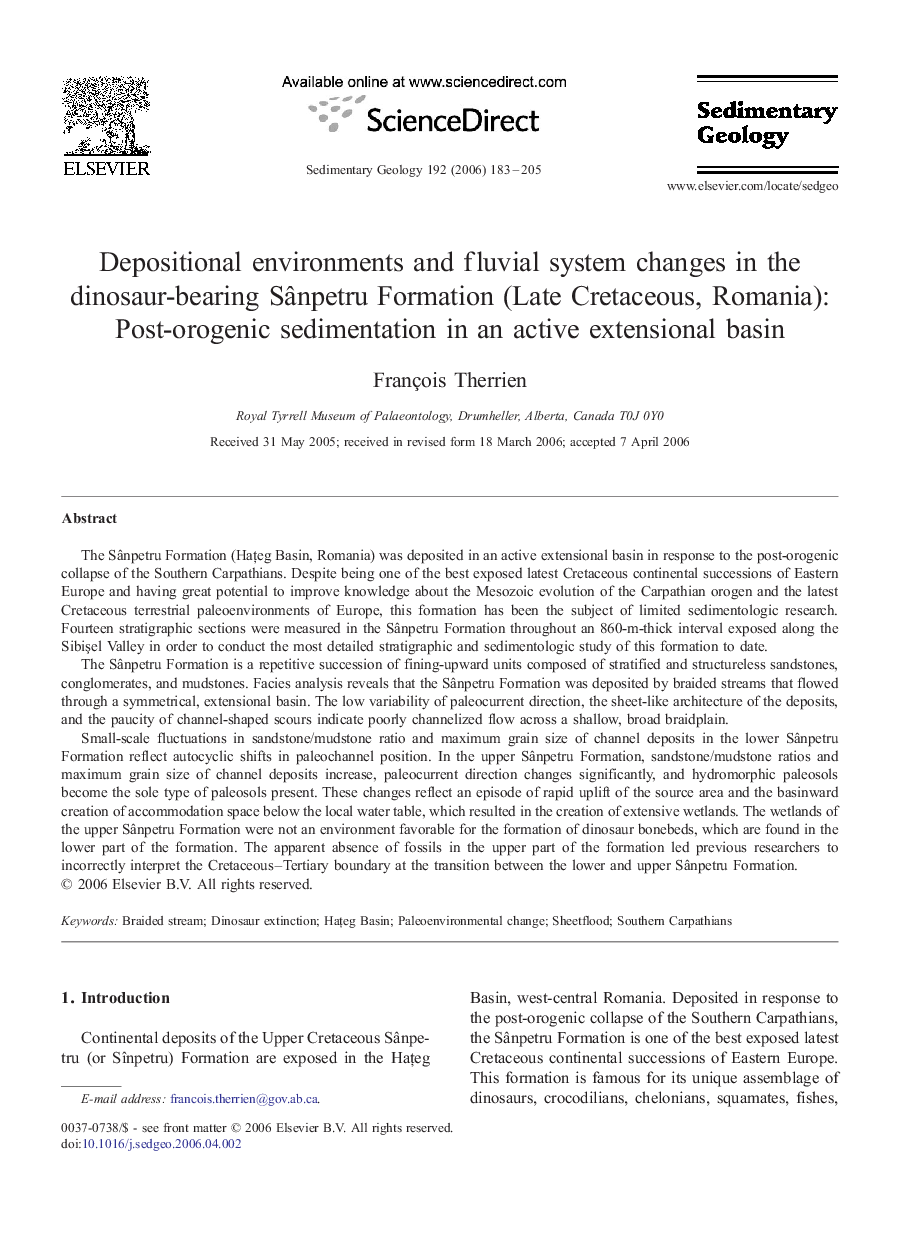| کد مقاله | کد نشریه | سال انتشار | مقاله انگلیسی | نسخه تمام متن |
|---|---|---|---|---|
| 4690929 | 1636179 | 2006 | 23 صفحه PDF | دانلود رایگان |

The Sânpetru Formation (Haţeg Basin, Romania) was deposited in an active extensional basin in response to the post-orogenic collapse of the Southern Carpathians. Despite being one of the best exposed latest Cretaceous continental successions of Eastern Europe and having great potential to improve knowledge about the Mesozoic evolution of the Carpathian orogen and the latest Cretaceous terrestrial paleoenvironments of Europe, this formation has been the subject of limited sedimentologic research. Fourteen stratigraphic sections were measured in the Sânpetru Formation throughout an 860-m-thick interval exposed along the Sibişel Valley in order to conduct the most detailed stratigraphic and sedimentologic study of this formation to date.The Sânpetru Formation is a repetitive succession of fining-upward units composed of stratified and structureless sandstones, conglomerates, and mudstones. Facies analysis reveals that the Sânpetru Formation was deposited by braided streams that flowed through a symmetrical, extensional basin. The low variability of paleocurrent direction, the sheet-like architecture of the deposits, and the paucity of channel-shaped scours indicate poorly channelized flow across a shallow, broad braidplain.Small-scale fluctuations in sandstone/mudstone ratio and maximum grain size of channel deposits in the lower Sânpetru Formation reflect autocyclic shifts in paleochannel position. In the upper Sânpetru Formation, sandstone/mudstone ratios and maximum grain size of channel deposits increase, paleocurrent direction changes significantly, and hydromorphic paleosols become the sole type of paleosols present. These changes reflect an episode of rapid uplift of the source area and the basinward creation of accommodation space below the local water table, which resulted in the creation of extensive wetlands. The wetlands of the upper Sânpetru Formation were not an environment favorable for the formation of dinosaur bonebeds, which are found in the lower part of the formation. The apparent absence of fossils in the upper part of the formation led previous researchers to incorrectly interpret the Cretaceous–Tertiary boundary at the transition between the lower and upper Sânpetru Formation.
Journal: Sedimentary Geology - Volume 192, Issues 3–4, 15 December 2006, Pages 183–205